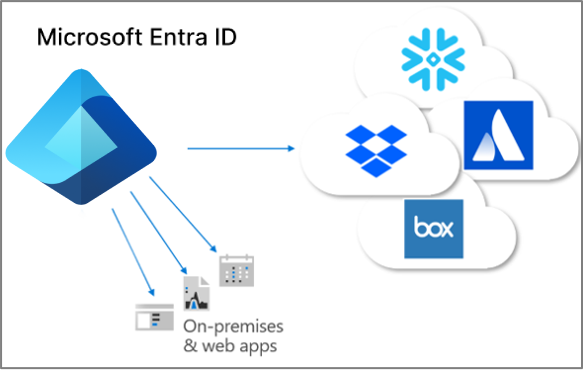Microsoft Entra ID (formerly Azure Active Directory) is a critical identity and access management solution used by enterprises to manage authentication and access control. While it ensures seamless integration with Microsoft 365 and cloud applications, organizations relying on Entra ID must prepare for disaster recovery challenges. Any disruption, misconfiguration or security breach can lead to significant downtime, data loss or security threats.
This article explores the potential issues that can arise in Microsoft Entra ID in terms of disaster recovery and their impact on organizations.
Accidental or Malicious Deletion of Users & Groups
Entra ID stores user accounts, groups, and permissions that control access to critical business applications. However, accidental deletion or insider threats can remove user identities, security groups, or application registrations.
- Users may lose access to Microsoft 365 apps (Exchange, SharePoint, Teams and OneDrive) and other SaaS applications.
- VPN authentication and Single Sign-On (SSO) integrations may stop working.
- Privileged accounts may be deleted, making recovery difficult.
Credential Compromise & Unauthorized Access
Identity-based cyberattacks such as phishing, password spraying, brute-force attacks or leaked credentials can result in unauthorized access. Attackers may gain entry into the system and escalate privileges.
- Global Administrator accounts may be taken over, leading to complete identity compromise.
- Attackers can modify Multi-Factor Authentication (MFA) settings or disable security policies.
- Sensitive data in Microsoft 365, Entra ID and third-party applications can be exposed.
Conditional Access and MFA (Multi-Factor Authentication)
Conditional Access and Multi-Factor Authentication (MFA) are essential for identity security, but misconfiguration can cause widespread access issues.
- Overly strict policies can lock out legitimate users from critical applications.
- Disabling MFA accidentally can expose accounts to security threats.
- Trusted locations or device compliance settings may prevent remote users from accessing company resources.
Service Outages in Microsoft Entra ID
Since Entra ID is a cloud-based identity service, organizations depend on Microsoft’s availability. Service disruptions can break authentication and prevent users from accessing essential services.
- Microsoft 365 login failures affecting email, Teams and business operations.
- Third-party SaaS applications that rely on Entra ID authentication may stop working.
- Hybrid identity models may experience on-premises & cloud authentication failures.
Expired or Deleted App Registrations
Many enterprise applications authenticate using App Registrations in Entra ID. If these credentials expired or deleted:
- Third-party SaaS apps may fail to authenticate users.
- API-driven workflows, automation and DevOps integrations may break.
- Cloud applications using OAuth authentication may stop working.
License & Subscription Expiry
Microsoft Entra ID and Microsoft 365 licenses control access to cloud identity services. Expired or inactive licenses can create:
- Loss of access to identity services, authentication and user data.
- Automatic deletion of inactive users due to license expiration.
- Authentication failures for mission-critical enterprise applications.
Privileged Role Misuse or Misconfiguration
Microsoft Entra ID relies on Role-Based Access Control (RBAC) for privilege management. However, if roles are misconfigured:
- Attackers or unauthorized admins may escalate privileges and gain access to sensitive data.
- Accidental Global Admin deletions can leave no one with recovery access.
- Weak privileged role assignments can expose the organization to security risks.
Sync Issues in Hybrid Identity Environments
Many enterprises use Hybrid Identity where Azure AD Connect synchronizes users between on-premises Active Directory and Entra ID. Sync failures can lead to:
- Outdated or missing user information in Entra ID.
- Password hash synchronization issues, preventing user logins.
- Authentication failures for hybrid setups like VPN, Single Sign-On and Windows devices.
Incomplete or Corrupted Backups
Unlike traditional Active Directory, Entra ID lacks full native backup capabilities. Backup issues can cause:
- Partial or corrupt data recovery, leading to missing user attributes.
- Time gaps between backups, resulting in loss of recent configurations.
- Failure to recover from ransomware attacks or accidental deletions.

Conclusion
Organizations must recognize that Entra ID is not immune to disaster recovery challenges. Account deletions, security misconfigurations, service outages and credential compromises can severely impact business operations.
A well-defined identity protection strategy and disaster recovery plan are crucial to ensuring the security, availability and integrity of Microsoft Entra ID. This is where a Backup product or solution like Veeam comes to the act. Veeam provides Disaster Recovery (DR) for Microsoft Entra ID. To learn more about our Backup solution for Entra ID, read this article:
To know more about our Micrsoft 365 services, click here on Microsoft 365

